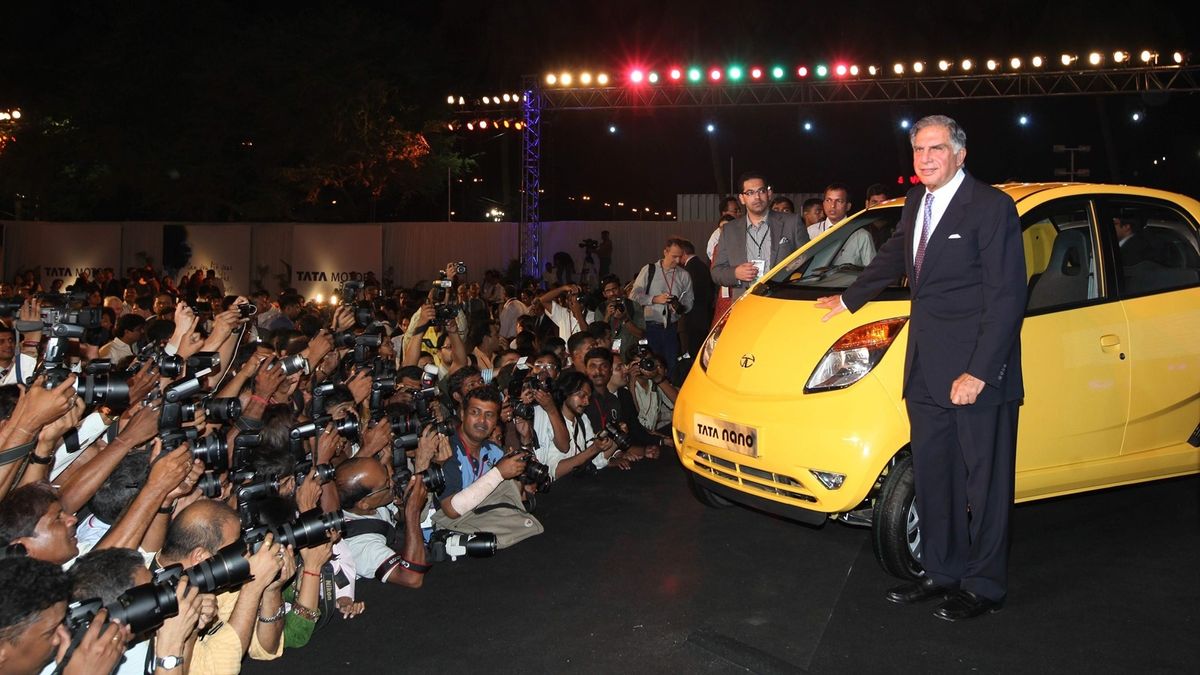The automotive trade mourns the lack of Ratan Tata, the visionary Indian industrialist who handed away on 9 October 2024. His journey within the car sector, notably the bold but in the end difficult Tata Nano venture, displays a deep-seated need to revolutionise mobility for thousands and thousands of Indians.
The genesis of the Tata Nano stemmed from a poignant statement. “What actually motivated me was continuously seeing Indian households on scooters, possibly the kid sandwiched between the mom and father, using to wherever they have been going, typically on slippery roads,” Tata shared on Instagram in 2022. This sight sparked his mission to create an inexpensive four-wheeler for the plenty.
Initially conceptualised as a safer different to two-wheelers, the venture developed from easy doodles of a fundamental dune buggy to what would grow to be often called the world’s most cost-effective automotive. Launched in 2008, the Nano was priced at roughly Rs 1 lakh, making it solely marginally dearer than many two-wheelers.
Nevertheless, the street to realising this dream was fraught with challenges. The venture confronted vital setbacks, together with protests over land acquisition for the manufacturing plant, authorized battles over settlements, and in the end, the need to relocate the manufacturing unit to a special state.
Regardless of its inexpensive price ticket and noble intentions, the Nano struggled to seek out its market. The very side that made it revolutionary – its positioning as the most cost effective automotive in India – paradoxically grew to become its Achilles’ heel. Indian shoppers, it appeared, aspired for extra than simply affordability of their first four-wheeler.
The Nano’s journey, although commercially disappointing, exemplified Ratan Tata’s unwavering dedication to his imaginative and prescient of inclusive mobility. “The Nano was all the time meant for all our folks,” he maintained in an Instagram publish dated Might 12, 2022, whilst gross sales figures advised a special story. The mannequin was finally discontinued in 2018, however its legacy as an bold try to democratise four-wheel mobility in India stays.
Tata’s automotive journey has been crammed with outstanding successes past the Nano. The launch of the Tata Indica in 1998 marked the delivery of India’s indigenous passenger automotive trade. In an period when Indian shoppers had restricted selections, largely restricted to international fashions or modified variations of worldwide manufacturers, the Indica stood as a testomony to Indian engineering functionality.
The trail-breaking acquisition of Jaguar Land Rover (JLR) in 2008 for $2.3 billion marked a dramatic shift in Tata’s automotive technique. This transfer got here 9 years after a humbling encounter with Invoice Ford, then Chairman of Ford, who had dismissively questioned Tata’s automotive experience. The profitable turnaround of JLR beneath Tata’s management not solely silenced critics but in addition stands as one of the vital profitable examples of an Indian firm reviving a legacy Western model.
Lately, Tata Motors has emerged as a pioneer in India’s electrical automobile revolution. With a commanding 73% market share and gross sales exceeding 150,000 EVs final 12 months, the corporate leads the transition to sustainable mobility. Fashions just like the Tiago EV hatchback and Nexon EV SUV have made electrical automobiles accessible to the Indian center class, echoing Ratan Tata’s unique imaginative and prescient of democratising mobility.
Apparently, the Nano story may but have an electrical epilogue. In 2022, an organization referred to as Electra EV retrofitted an electrical powertrain right into a Tata Nano, which was delivered to Ratan Tata himself, hinting at a doable renaissance for the folks’s automotive in an electrical avatar.
Because the nation bids farewell to this industrial titan, Ratan Tata’s legacy within the automotive sector stays indelible.
Written with the View : afaqs
